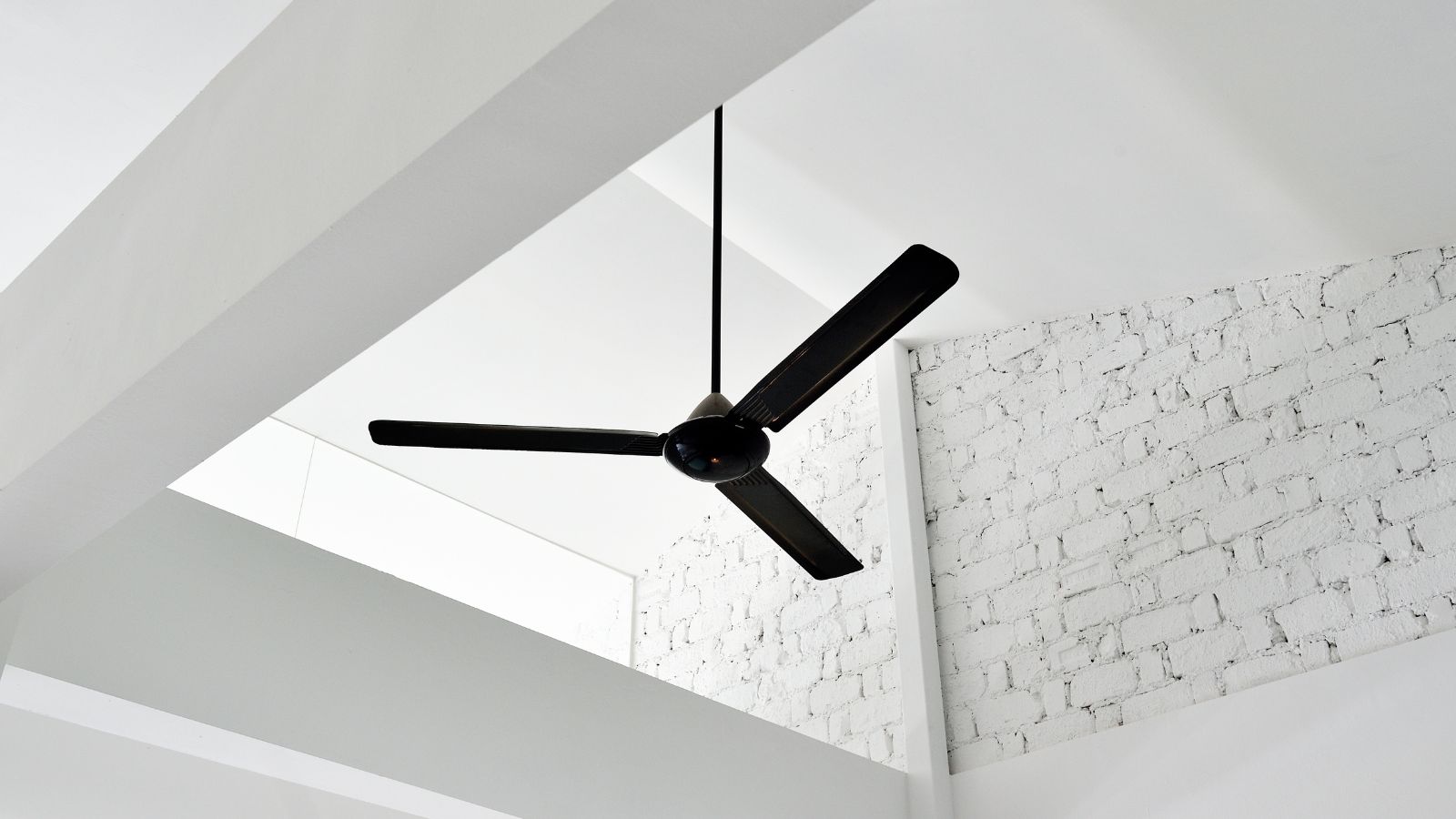Learn how to fix a wobbly ceiling fan to keep your home cool
Our experts have provided a number of tips to help you fix a wobbly ceiling fan


Ceiling fans are brilliant devices for circulating air around our homes, improving ventilation, and cooling us down when the summer heat gets too much.
However, a wobbly ceiling fan is ineffective at cooling a room. It is also annoying and dangerous if it falls from the ceiling. Thankfully, a shaky ceiling fan can be fixed to provide long-lasting, safe operation and effective air handling.
While serious wobbles may require you to re-mount or even replace your fan, there are some tricks you can use to correct minor imbalances.
How to fix a wobbly ceiling fan
A wobbly ceiling fan is a potential hazard you could do without. It usually indicates that the fan isn't securely attached or the blades are unbalanced. Here's a detailed guide on how to fix a wobbly ceiling fan:
1. Turn Off Power
Before you start working on the fan, turn off the electricity to the ceiling fan by turning the circuit breaker at the electrical service panel. Then, cover the floor directly beneath the ceiling fan with a drop cloth or plastic sheeting, which can be bought from Amazon.
2. Check Brackets and Screws
Tighten the Screws: Use a screwdriver to tighten all the screws that hold the fan blades in place, as well as the screws connecting the fan to the ceiling mount. Sometimes, tightening these can solve the problem. Try also tightening the blade arms. Blade arms are T-shaped metal elements that connect the fan blades to the ceiling fan. If any fan blades droop due to loose connections to the blade arms, use a screwdriver to tighten them.
Check the Mounting Bracket: Josh Mitchell, HVAC technician and owner of Air Conditioner Lab, suggests that you also ensure that the mounting bracket/ceiling fan mount is securely attached to the ceiling joist. A loose mounting bracket could be the cause of your wobbly ceiling fan. If it's loose, tighten the screws or bolts securing it. If the bracket seems damaged, replace it.
Design expertise in your inbox – from inspiring decorating ideas and beautiful celebrity homes to practical gardening advice and shopping round-ups.

3. Examine the Fan Blades
Inspect for Damage: Over time, fan blades may warp or become damaged, affecting their balance and causing wobbling. Inspect the blades for any signs of warping, cracks, or damage, and replace any compromised blades to restore smooth operation.
One blade's slight bend or distortion can throw the fan off balance. Replace any bent or deformed fan blade arms. Bent fan blade arms are difficult to bend back into form, so it is preferable to replace them. Fan blades from Amazon are often sold in bundles of five, so it is better to change them all at once.
If the wobbling persists despite these efforts, it may be time to consider cleaning the ceiling fan or replacing the ceiling fan altogether with a properly balanced one.
Measure the Blades: Use a tape measure to ensure all blades are at the same distance from the ceiling. If any blade is out of alignment, you can gently bend the blade holder (not the blade itself) until it matches the others.
4. Balance the Blades
Use a Balancing Kit: If all blades appear intact, the next step is to balance them. According to Guy Caldwell, HVAC Master Instructor at The Refrigeration School, most fan kits include a balancing kit, which includes a clip and balancing weights, however if you do not have one you can buy a ceiling fan blade balancing kit from Walmart. ‘Attach the balancing clip to the middle of the leading edge of a blade. Next turn on the fan to see if the wobble improves,’ Guy explains.
Adjust the Weight: ‘Move the clip around the blades to find where the wobble minimizes,’ Guy continues. ‘Once you see it, replace the clip with the adhesive balancing weights from the kit, placing them on top of the blade near the clip location.’

5. Check the Downrod & Test the Fan
Secure the Downrod: Inspect the downrod—the metal pipe connecting the fan to the ceiling. Ensure it's securely fastened and that the ball joint at the end of the downrod is snugly fit into the mount. A loose downrod can cause significant wobbling. Use a wrench to tighten the bolts if necessary.
Turn the Power Back On: After adjusting, turn the power back on and test the fan. Watch for wobbles and listen for any unusual sounds. If the fan still wobbles, repeat the balancing process or check for loose components again.
FAQs
Why is my ceiling fan making noise?
A ceiling fan could be making unnecessary noises for a number of reasons. In most cases, the noise will be caused by a loose blade, or a bent blade arm. Humming or buzzing noises may most likely be due to an issue with the motor or wiring, whereas a rubbing noise indicated two parts of the fan rubbing against one another.
Generally, fixing a wobbly ceiling fan involves tightening all connections and balancing the blades. Regular maintenance checks can prevent wobbles from developing and ensure your fan operates smoothly and safely. You can also enhance the power of your fans' cooling ability by changing its direction.
Suppose the problem persists despite all these steps. In that case, it might be best to consult a professional or consider replacing the fan if it's old or significantly damaged.

Seraphina is a contributing editor at Homes & Gardens, writing Solved features on organizing and storage. She loves to decorate and also grow her own produce from her home in London. Her previous experience includes working at Women's Health and Fabulous Magazine.